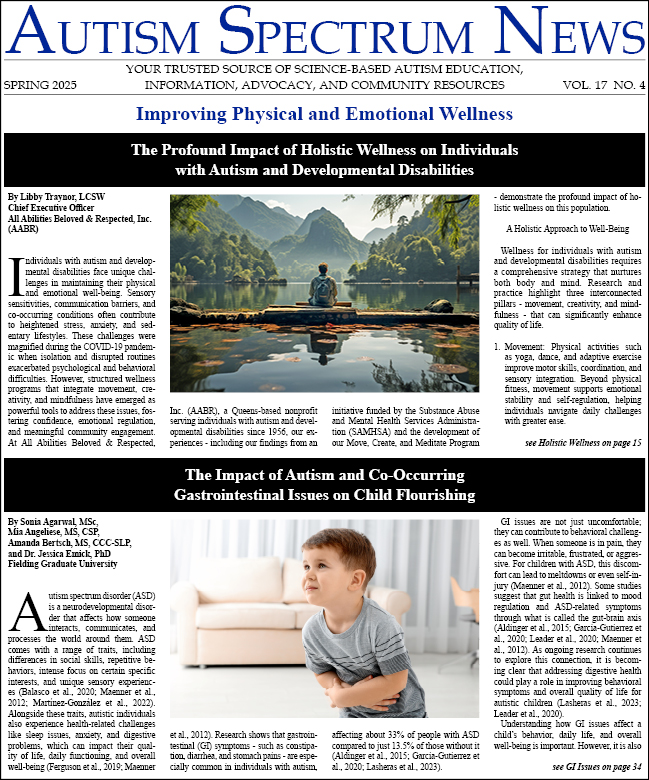-
Empowering Safety: A Foundation for Physical Health and Emotional Wellness for Autistic Individuals
Safety is often seen as a way to avoid harm, but it is much more than that. Safety is a cornerstone of physical health and emotional wellness, especially for people on the autism spectrum. It provides the foundation needed to navigate life’s challenges, build independence, and maintain a sense of...
-
Amid Increasingly Extreme Weather, Autistic Individuals Left Particularly Vulnerable to Climate Change Effects
Sherman Gillums Jr., the Federal Emergency Management Agency Director of Disability Integration and Coordination, remembers the event that made him realize emergency responses during natural disasters needed to be more autism-inclusive. In the throes of Hurricane Ian — the fifth strongest storm...
-
Preparing Autism Service Providers for Natural Disasters and Other Emergencies
When confronted with an emergency, people with autism spectrum disorder are at a greater risk for injury or death than their neurotypical peers. Many autistic children and adults lack safety awareness or the ability to follow basic safety rules. Even if they have these critical skills, each...
-
How to Create a Safe and Engaging Sensory Experience at the Pool
The pool is a great tool to use to cool down and engage individuals with autism spectrum disorder (ASD) over the summer. Not only can water exploration in the pool provide socialization opportunities in a natural environment, but water can meet essential sensory needs as it provides deep pressure...
-
Webinar: Preparing for Puberty in Children with Autism
In this recorded webinar, Cora Taylor, PhD, discusses puberty in individuals with special developmental needs, including: Helping children understand and prepare for body changes associated with puberty Encouraging good hygiene Understanding public/private behaviors Handling issues...
-
Preparing School-Age Students for Post-Secondary Education
Preparing school-age students with autism for the transition into post-secondary education is perhaps as challenging for teachers as it is daunting for parents. According to a National Autism Indicators Report, “Young adults with autism have a difficult time following high school for almost any...
-
Overcoming Challenges with Technology: One Individual’s Journey from Hospitalization to a Career
Individuals with complex profiles can display behaviors that are dangerous enough to lead to frequent involvement with police and hospitalizations. Such was the case for Bob (pseudonym), who had a history of significant aggression, property destruction, and elopement behaviors. Bob lived at home...
-
Being Smarter with Smarter Tech: YAI Center for Innovation and Engagement
Technology is an essential part of all of our lives. It can have a profound impact, whether allowing us to connect with family; reminding us to take medication; or keeping us safe at home, at work, or on the road. The coronavirus pandemic has only highlighted the centrality of technology for...
-
Using Cell Phones to Increase Independence in the Community for Young Adults with Autism
All individuals deserve to be active members of the community in which they reside. However, independent societal participation for young people with disabilities, particularly those with autism spectrum disorder (ASD) who also have a secondary disability diagnosis (e.g., intellectual disability)...
-
Cultivating Independence Through Technology
Is it possible to live independently with a disability? This question is often a source of concern for those with a disability like autism. However, it is important to remember that independence can look different for everyone, and technology can play a valuable role in fostering independence. At...




